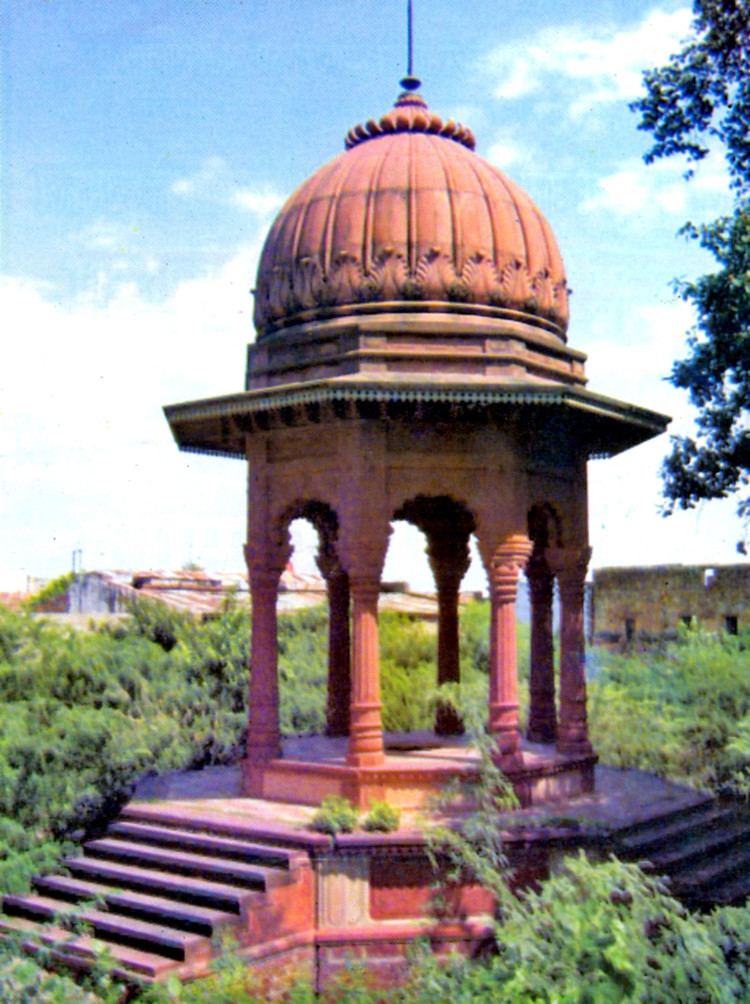 | ||
Ekach chhatri by kavi ganesh mirgule
Chhatris are elevated, dome-shaped pavilions used as an element in Indian architecture. The word Chhatri means "canopy" or "umbrella." In the context of architecture, the word is used to refer to two different things. The usual and more widely understood meaning is of a memorial, usually very ornate, built over the site where the funeral (cremation) of an important man was performed. Such memorials usually consist of a platform girded by a set of ornate pillars which hold up a stone canopy. The word chhatri is also used to refer to the small pavilions that mark the corners, roof of entrance of a major building. These pavilions are purely decorative and have no utility, but are a classic folly which announce the status and wealth of the owner.
Contents
- Ekach chhatri by kavi ganesh mirgule
- Chhatri bagh in indore
- In Rajasthan
- In Shekhawati
- In Madhya Pradesh
- In Kutch
- Outside India
- References
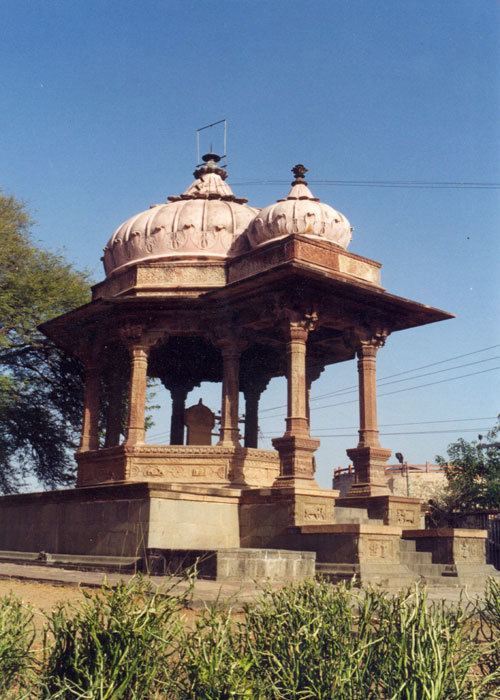
Chhatris are commonly used to depict the elements of pride and honor in the Jat, Maratha and Rajput architecture. They are widely used, in palaces, in forts, or to demarcate funerary sites. Originating in Rajasthani architecture where they were memorials for kings and royalty, they were later adapted as a standard feature in all buildings in Maratha ruled states, Rajasthan, and most importantly in Mughal architecture. They are today seen on its finest monuments, Humayun's Tomb in Delhi and the Taj Mahal in Agra. Chhatris are basic element of Hindu as well as Mughal architecture. The term "chhatri" (Hindi: छतरी) means umbrella or canopy.
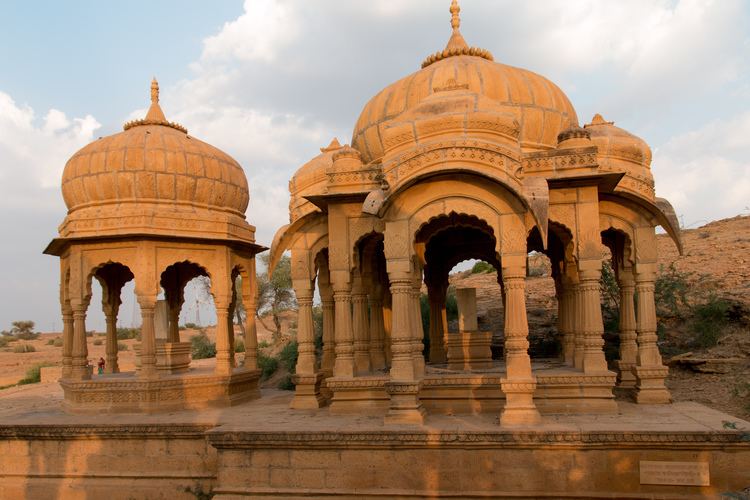
In the Shekhawati region of Rajasthan, chhatris are built on the cremation sites of wealthy or distinguished individuals. Chhatris in Shekhawati may consist of a simple structure of one dome raised by four pillars to a building containing many domes and a basement with several rooms. In some places, the interior of the chhatris is painted in the same manner as the Havelis (Mansions) of the region.
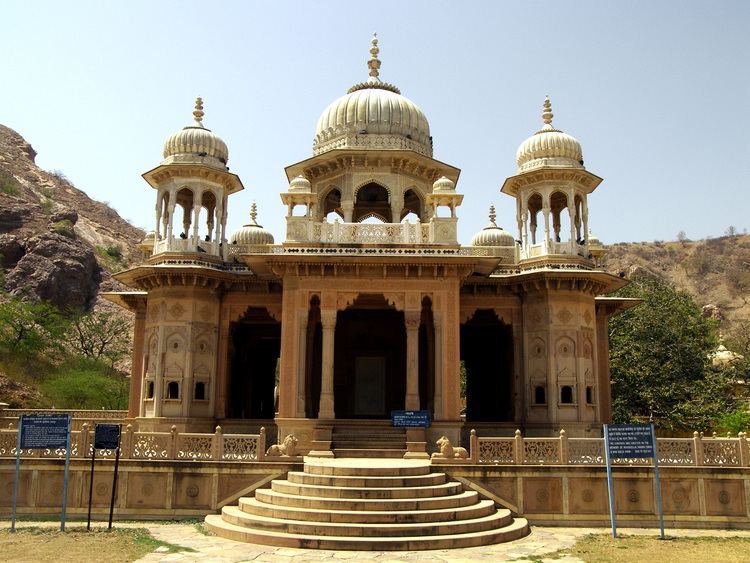
Chhatri bagh in indore
In Rajasthan
Many other chhatris exist in other parts of Rajasthan. Their locations include:
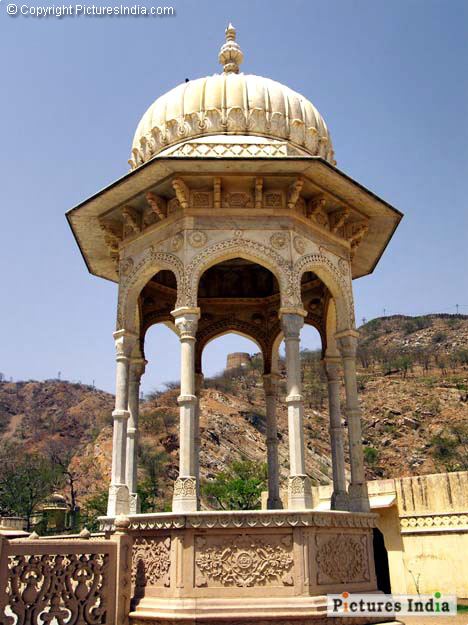
In Shekhawati
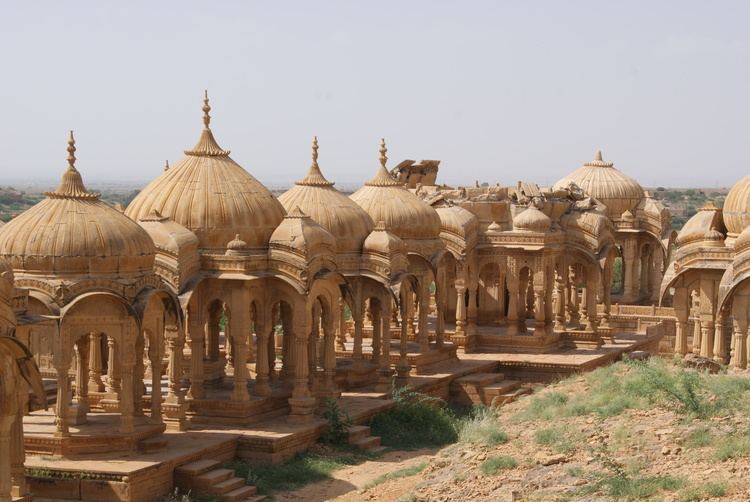
Some of the best-known chhatris in the Shekhawati region of Rajasthan are located at the following cities and towns:
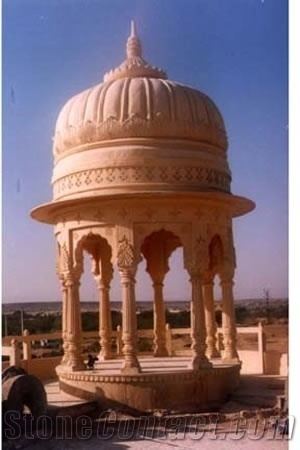
In Madhya Pradesh
The region of Madhya Pradesh is the site of several other notable chhatris of its famous Maratha rulers:
In Kutch
Chhatris can also be found in the outskirts of Bhuj city belonging mainly to Jadeja rulers of Kutch. The chhatri of Rao Lakhpatji is very famous for its intricate designs & carvings. Most of them but have been destroyed in the 2001 Gujarat earthquake. The restoration work is going on.
Outside India
There are two notable chhatris in the United Kingdom, a country with strong historical links to India. One is a cenotaph in Brighton, dedicated to the Indian soldiers who died in the First World War. The other is in Arnos Vale Cemetery near Bristol and is a memorial to the distinguished Indian reformer Ram Mohan Roy, who died in the city.
